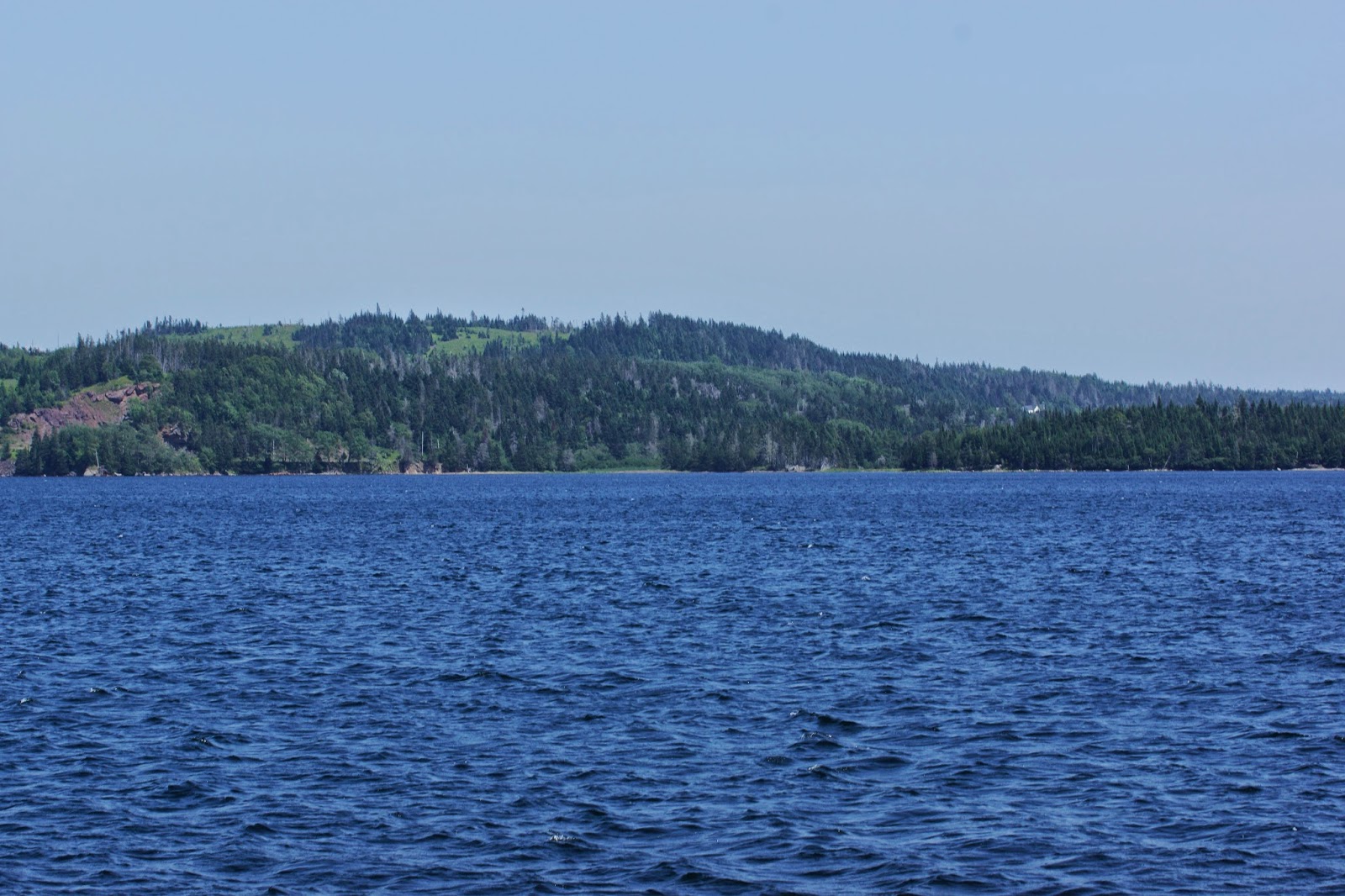We gladly departed the very cramped marina in Chandler in the province of Quebec about 0500, grateful that the wind had not risen and we had therefore not carried away their tenuous dock. It took a bit of my analytical planning and understanding of the physics of moving boats to extricate Spirit Journey from its docking position, but this was accomplished in a mere 10 minutes without difficulty. Texas Ranger then left its dock and led the 90-mile trek across the Bay of Chaleur, around Miscou Island, and down the coast of the province of New Brunswick to an anchorage behind Portage Island in Miramichi Bay. We likely would have ventured farther south the following day to the town of Miramichi, but a forecast of rough weather in a couple of days suggested that the wiser course was another long day across the Northumberland Strait to Summerside in Prince Edward Island province, Canada's smallest province. We are now in the Atlantic time zone.
The dirt on Prince Edward Island is quite red, and the town is large enough to have just about anything needed. The marina is nice, but they asked us to sandwich into a dock space with about 15 feet more than our combined lengths. I am the envy of the local yacht club, as a couple of dozen "witnesses" watched with their jaws agape as I backed/parallel parked as the second boat in. We will spend about 3 nights here until the front has passed (it is blowing 30 knots ahead of the front). One unique attribute of the town is the College of Piping and Celtic Performing Arts of Canada. We attended an early afternoon sampling of their presentation, which will be much more elaborate in the evening. Given the distance to walk back and the cost, the sampling will likely suffice. En route back to the boat, I toured an old machine shop with many of the belt-driven tools used in that shop and its foundry for nearly 100 years.
 |
| More Seals |
 |
| Prince Edward Island |
 |
| College of Piping |
 |
| Snare Drummer |
 |
| Piper |
 |
| College of Piping |
 |
| Old Summerside Machine Shop |
 |
| Tight Fit |





















































